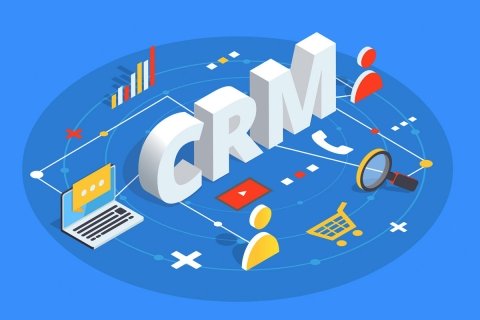
What CRM are you using and have you set it up completely?
Srini Nageshwar - April 2019
The two most important business tools for any company are
- The accounting system
- The sales and marketing system
Both of these are integral to operating a company regardless of how small it is. Choosing the right tool and implementing it properly are critical. These are very long term business decisions since one does not change these tools easily. They need to stay with you as you grow from no revenue to 100M$. Most importantly, they need to help you grow to 100M$.
We went through this process at the start of our company and had our share of wrong decisions. The accounting package was the most expensive mistake. We chose Netsuite in 2005 because we needed to run three subsidiaries - two of them foreign. We came to find out that Netsuite had some fatal flaws
- It was way too expensive for a small company.
- They could not handle multiple subsidiaries even though they said they could. They wanted us to buy a separate package for each subsidiary.
- If they were not paid for a quarter they just shut us down. This was very serious since an accounting system is an essential tool. Shutting this down for a start up is like shutting down electricity or water for an infant or an old person. There should be a law that prohibits this. Public utilities are not allowed to indiscriminately shut down essential services to old age people.
It was very expensive for us to move away from Netsuite. We finally decided to use local (and much cheaper systems) - Quickbooks in the US, Tally in India and a local system in Switzerland. We use Excel to consolidate the results of all three entities.
We were initially using the CRM in Netsuite but also found that it was frightfully expensive. We made the change to SugarCRM ver 4.5 in 2006. Sugar is an open source package. We loaded the software on our own server and ran it locally. This was our first serious mistake.
Frankly, it almost does not matter which CRM software you choose. They will all do whatever you want done. The most critical element is how you use it and how you build up expertise in its use. You have to take ownership and build up expertise. Having said that you want to use the cheapest, name brand software. For us this was Sugar.
Unfortunately people spend much time trying to choose the right software and using a consultant to implement it. Wrong. Spend your time in the implementation and not in choosing the software.
Our second serious mistake was that we did not put enough effort into defining the usage of the product. There are no standards like GAAP (for accounting) for sales and marketing. Different people could be using the same CRM software but may differ vastly in how they use it. In contrast to accounting software, it is very critical that the company define the use very well and the users be trained on it.
There are categories like targets, leads, contacts, opportunities, accounts etc. that need to be defined specifically for your company before you ever start using the product. This has a massive impact on customer data analysis, reporting, marketing campaigns, and managing sales funnels i.e. everything you do with customer data.
Your CRM system serves two very important purposes
- Keeping track of all your customers and recording every interaction that your company has with them.
- Using the customer database for marketing and sales campaigns.
When we implemented 4.5 we did not define the usage very clearly. To give you a simple example - entering the country name for the US. People can enter this as US, USA, United States. Each of these entries is a different country in the eyes of the software. When you want to get a list of all your customers in the US, you will never be able to do this since the software thinks the customers are in 3 separate countries. Given that there are a huge number of entries, you will not be able to use the CRM software effectively if you do not mandate all this and train people on it before use. You cannot let individual users decide how they are going to enter data. You will never get any consistency.
To put it succinctly, we had 7500 customer names in our 4.5 and were never able to use them properly.
We took a second pass and implemented Sugar 6.6 in 2014. This time around we let Sugar host the software. The advantage is that we do not have to deal with IT issues.
- They do all the backups and updates.
- We are always using the latest update.
We also made sure that we use the standard package. No special routines. We also made sure we used no consultants. They do not know your business and do not know how you want to use the software tool. They make money by making you use them to do special things with the software. This, of course makes it impossible for you to use the latest software version.
We wrote a company specific user manual and defined the categories and the usage very clearly
- What constitutes a target, lead, contact, opportunity, account?
- How is each field to be entered? We tried to put in drop down menus so our users only had to choose from a predetermined drop down menu. But this is not always possible.
- We restricted the usage to people who had a need to have not people who thought it would be nice to have. This way there are less people who can mess up the system.
Today we use Sugar
- To pursue new customers
- To keep in touch with our current customers
- We send out a CEO's newsletter regularly to all our customers
- We send out our latest clinical studies to all the medical practitioners we have on the database, whether they are customers or not
- We have our shareholders on the system so our quarterly shareholder communications go out via Sugar.
We can continually think of new things to do with the system and we are not hampered or constrained by our system definitions.
In addition, we have connected Quickbooks and SugarCRM. This allows us to have. a common customer database in the company that both Quickbooks and Sugar use. Sales data from Quickbooks goes into Sugar so this is a welcome addition to the customer record.
We are now able to take orders via a shopping cart on our website, have it get into Quickbooks, process the order, ship product and finally update the customer record in Sugar.
When a customer calls, our support people immediately have all the interactions we have had with the customer at their fingertips. They are able to call the customer from the customer record in the Sugar database. We paid for our mistakes with 4.5 by downloading the entire 4.5 database into a giant excel spreadsheet. We then took all the fields and recast them according to our definitions in 6. We now have the original 7500 contacts in the most up to date version of Sugar and are now discovering that a lot of information that we would need for marketing is missing. Customer data is the most valuable thing in the company so we will have to figure out how to complete all this information.
The next level of sophistication will be to add a marketing automation system on top of Sugar. We have not taken this step yet. We wanted to use our Sugar system very effectively while building up sales and marketing expertise within our staff.
A marketing automation system adds a lot more marketing oomph to your activity. You can now focus on driving traffic to your website, engaging with them, converting them to leads, then paying customers and keep in touch with them on an ongoing basis to continually be top of mind in their eyes. You can also add social media monitoring capability and measure your performance in the various social media vehicles and take steps to improve your participation.
It really adds a huge amount of sophistication to your marketing capability. It ultimately plays a big role in growing your company's business, which is the reason you are doing all this anyway.

